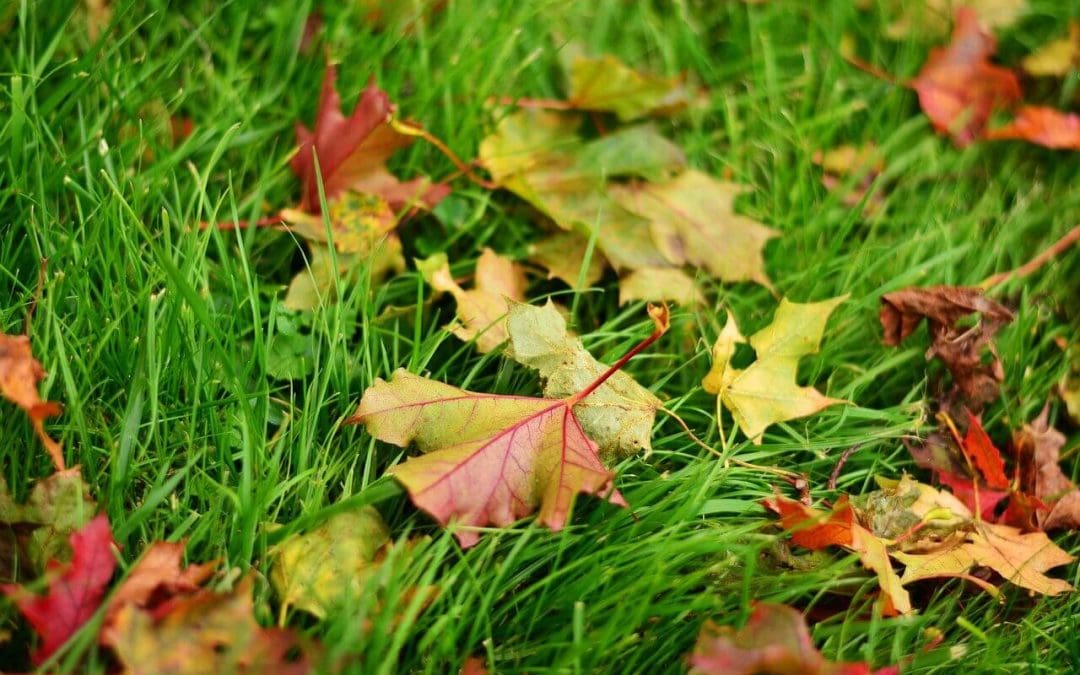Under the frozen ground in the winter, the roots of the grass are still alive and preparing to grow again in the spring. Here are 5 things to do for your lawn in the fall.
Lawn Care Involves Removing Fall Leaves
A thick blanket of decaying leaves is not good for the turf underneath. Fallen leaves block the sunlight and trap moisture, inviting mildew and disease to spread.
Rake or blow leaves from the lawn often and add them to your compost pile. You can also use a mulching mower to mow over the leaves, helping to break them down.
Continue Mowing and Watering
It is not time to stop the normal lawn care routine yet. Continue to water your lawn because even though it’s cooler, the grass will still need enough moisture to reach the roots.
In the fall, continue to mow regularly. Cut about 1/3 of the grass blade length as usual. Longer grass is more vulnerable to mold or mildew. Grass that is too short is also unhealthy because it will not have the endurance to withstand winter. Mowing also helps break down the leaves by chopping them into soil-enhancing mulch.
Fall Lawn Care: Aerate
Aeration is the process of breaking up the ground by pulling out small plugs of soil with an aerator. This treatment helps loosen compacted soil and break through the thatch, a tangled covering of dead grass stems and leaves that covers the turf.
Most lawn care companies offer aeration as part of their fall lawn care package because it helps oxygen, water, and nutrients reach the roots in time to strengthen them for the winter.
Fertilize in the Fall
After aeration, it is a good idea to add fertilizer to the lawn. The fertilizer feeds the grass so it can develop stronger, healthier roots before freezing weather arrives. The boost from the fertilizer helps your grass survive the winter and grow back healthier when it gets warm again.
To Care for Your Lawn, Fill in Bare Spots
Put away the lawn furniture, remove the bicycles and sporting equipment, and see where the lawn needs some extra attention. Heavy objects often leave patches of dead grass underneath. The grass may also be damaged from vehicles parking on it, pet waste, busy summertime foot traffic, or improper mowing.
Seed the lawn in the fall because the soil is still warm and the seeds have time to root. It is fine to slightly over-seed because the thicker grass will help slow weed growth later. Seeding the lawn in the fall replenishes the patchy areas so it can survive the winter and grow again in the spring.
Fall is an ideal time to treat the lawn because the ground is warm enough for new grass to take root, moisture is still plentiful, and the sun is not too hot. Proper fall lawn care is vital to the long-term health of the grass.
Appalachian Inspection Services provides home inspections to customers in Western North Carolina. Contact us to schedule an appointment.

